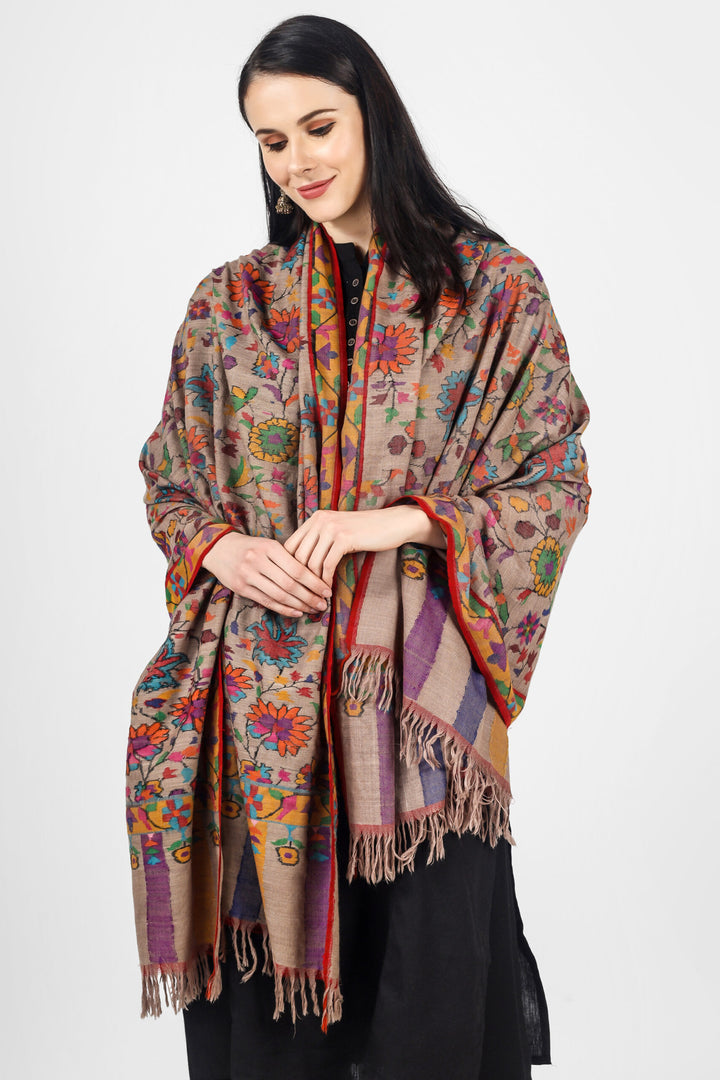The Elegance of Kani Shawls: A Tale of Craftsmanship
In the enchanting region of Kashmir, where natural beauty and cultural heritage entwine, lies the secret to an age-old luxury – the Kani shawl. This remarkable piece of artistry has been woven into the tapestry of Kashmiri culture for centuries. It is celebrated not just for its warmth and elegance but for the intricate craftsmanship that goes into creating it.
The Essence of Kani Shawls
At the heart of every Kani shawl lies the finest Pashmina wool. Sourced from the underbelly of Pashmina goats that roam the Himalayan region, this wool is renowned for its extraordinary softness and insulating warmth. This natural wonder sets the stage for the creation of something truly exceptional.
Crafting the Kani Shawl
The journey of a Kani shawl begins with the careful cleaning and carding of the raw Pashmina wool. This process ensures that the fibers are aligned perfectly, creating a smooth and uniform yarn. The finer the yarn, the more delicate the final product.
The next step involves the art of spinning. The carded wool is spun into fine yarn, a process that demands precision and skill. The fineness of the yarn is paramount, as it determines the shawl's exquisite delicacy.
Dyeing the yarn is an integral part of the process. Using either natural or synthetic dyes, the yarn is infused with a palette of earthy tones and rich hues, adding life to the fabric.
The Kani Sticks: Guardians of Tradition
The unique aspect of the Kani shawl lies in its namesake - the Kani sticks. These slender, flat wooden pieces, traditionally crafted from willow, are carefully prepared for their role in the weaving process. Small notches are carved into these sticks, serving as anchors for the yarn during weaving.
The Weaving Process: Where Art Comes to Life
Weaving a Kani shawl is where artistry truly takes center stage. The weaver, often working with meticulous precision, interlaces the dyed yarn using the Kani sticks to craft intricate patterns and motifs. These sticks are indispensable, allowing the weaver to control the placement of each thread with extraordinary finesse. The process is an intricate dance of colors and textures, demanding both skill and patience.
Completing the Masterpiece
Once the weaving is complete, the individual panels or sections are painstakingly assembled to form the full shawl. These sections are stitched together with unwavering precision to ensure that patterns align seamlessly.
The finished shawl then undergoes several finishing processes. These may include washing, blocking, and pressing, which enhance both the texture and appearance of the shawl.
The Final Flourish
The Kani shawl often receives some additional embellishments. The edges may be trimmed for a polished look, and a fringe may be added for a decorative touch. These finishing touches add to the shawl's overall appeal and allure.
A Celebration of Kashmiri Heritage
Kani shawls are not merely garments; they are a testament to timeless beauty and cultural significance. Their intricate patterns draw inspiration from nature, Persian motifs, and traditional Kashmiri designs. These shawls are not just warm and luxurious; they represent the rich heritage and craftsmanship of Kashmir.
Each Kani shawl is a work of art, and owning one is like possessing a piece of Kashmir's cultural legacy. They serve as a reminder of the dedication, skill, and tradition that continue to thrive in the heart of the Himalayas. A Kani shawl is not just a garment; it is a masterpiece, a story woven with threads of heritage and craftsmanship.

Comments
Post a Comment